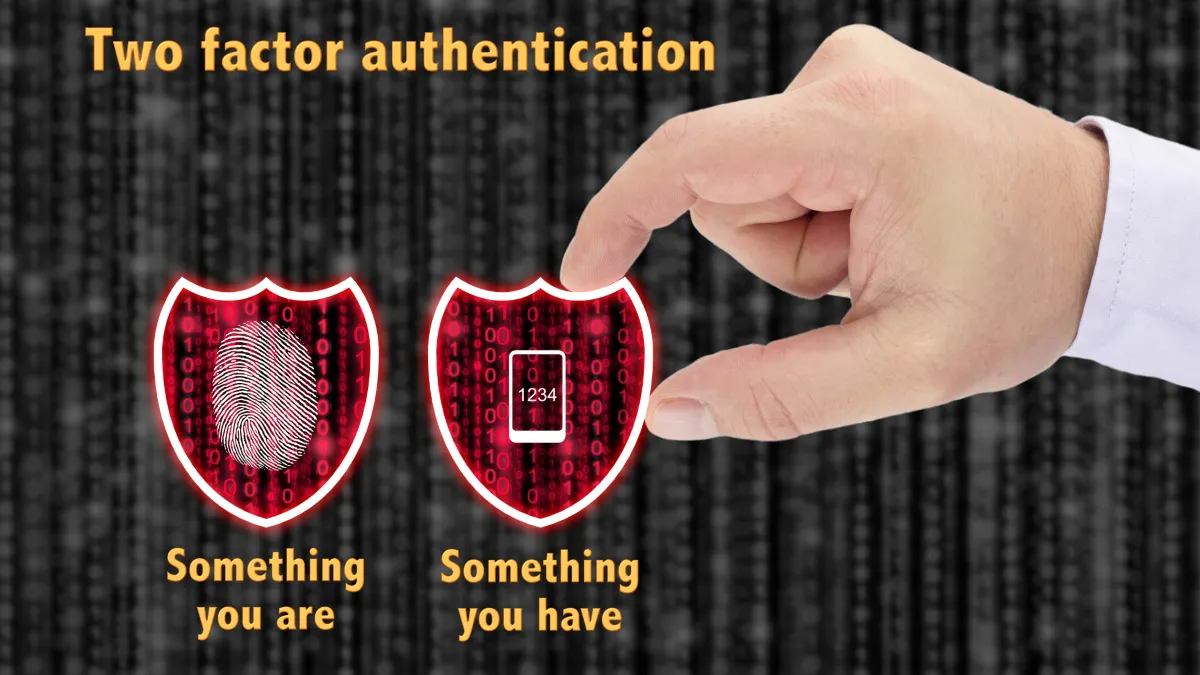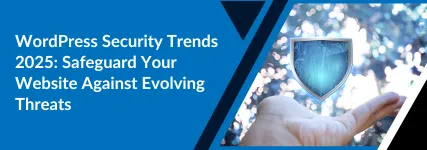WordPress powers over 40% of all websites globally, making it a prime target for cybercriminals. With the digital landscape rapidly changing, it’s essential for WordPress site owners to stay informed about the latest security trends. This guide outlines the top WordPress security trends for 2025 and offers actionable insights to keep your website safe. From AI-powered solutions to enhanced privacy protocols, learn how to protect your site from evolving cyber threats and avoid costly breaches.
AI-Powered Automated Security Solutions
The rise of AI has revolutionized how websites handle cybersecurity. In 2025, AI-powered tools will be even more integral in detecting vulnerabilities, managing threats, and automating security updates for WordPress sites. AI systems can scan for malicious activity 24/7, helping you stay ahead of sophisticated attacks.
Key Benefits of AI-Powered Security for WordPress:
- Real-time Monitoring: AI systems can continuously monitor for suspicious activity and respond instantly.
- Predictive Threat Detection: AI uses machine learning to identify patterns and predict potential threats before they escalate.
- Automated Patching: AI tools automatically apply security updates and patches, keeping your site up-to-date without manual intervention.
- Reduced Human Error: AI minimizes the risk of oversight in security tasks, such as weak passwords or outdated plugins.
Actionable Step:
Incorporate AI-driven security plugins like Wordfence or Sucuri to automate your site’s defense and ensure round-the-clock protection against cyberattacks.

Website Performance and Security: An Interlinked Priority
In 2025, optimizing your website’s performance will go hand-in-hand with maintaining strong security protocols. Poorly optimized websites with outdated plugins and slow load times are more vulnerable to attacks like DDoS (Distributed Denial of Service) and brute force login attempts.
Key Actions to Improve Performance and Security:
- Use a Content Delivery Network (CDN): CDNs like Cloudflare not only reduce latency but also offer protection against DDoS attacks.
- Implement Caching Plugins: Tools like WP Rocket improve site performance and strengthen security by limiting server load during attacks.
- Update Plugins Regularly: Outdated plugins can slow your site and create vulnerabilities that hackers exploit.
Actionable Step:
Ensure all your site’s plugins and themes are optimized and updated to their latest versions to protect against vulnerabilities and enhance load times.
The Growing Importance of Two-Factor Authentication (2FA)
As cyberattacks become more sophisticated, the need for Two-factor authentication (2FA) is becoming critical in 2025. Relying solely on a password is no longer secure enough; implementing 2FA requires users to provide a secondary verification step, making unauthorized access significantly more difficult.
Benefits of 2FA for WordPress Security:
- Added Layer of Security: Even if your password is compromised, 2FA ensures an attacker still needs a second form of authentication, like a one-time password (OTP) sent to your phone.
- Mitigates Brute Force Attacks: Attackers may still try to guess passwords, but without access to the secondary authentication method, these attempts are futile.
Actionable Step:
Use 2FA plugins like Google Authenticator or Authy to enhance your WordPress login security and ensure only authorized users can access your admin dashboard.

Vigilance Against Supply Chain Attacks
Supply chain attacks, where vulnerabilities in third-party software are exploited, are a rising threat in 2025. WordPress relies heavily on third-party plugins and themes to expand functionality, and these add-ons can be entry points for attackers if they aren’t regularly updated or come from unverified sources.
Steps to Reduce the Risk of Supply Chain Attacks:
- Audit Plugins and Themes: Regularly review all third-party software on your site and remove unused or outdated ones.
- Use Reputable Sources: Only download plugins and themes from trusted sources like the WordPress Plugin Directory.
- Update Frequently: Ensure that all installed software is up-to-date to avoid vulnerabilities caused by outdated code.
Actionable Step:
Schedule regular plugin and theme audits and monitor for new security patches. Uninstall any outdated or unused plugins to reduce potential entry points for attackers.
Data Privacy and Protection Regulations Will Be a Growing Concern
With regulations like GDPR and CCPA becoming more stringent, 2025 will see an increased focus on data privacy. WordPress site owners must prioritize compliance to avoid fines and maintain user trust. Implementing proper consent management and transparent data handling practices are essential components of a strong WordPress security strategy.
Best Practices for Data Privacy Compliance:
- Consent Management: Use plugins like GDPR Cookie Consent to obtain clear consent for data collection and cookie usage.
- Transparent Privacy Policies: Clearly explain how user data is collected, stored, and used on your website.
- User Data Control: Ensure users have the ability to request data deletion or export as required by regulations.
Actionable Step:
Implement GDPR-compliant tools to manage user consent and data collection. Update your privacy policy to reflect current legal requirements and best practices.

User Training and Security Awareness
No matter how advanced your security systems are, human error is often the weakest link in cybersecurity. In 2025, there will be an increased emphasis on training and security awareness to help users recognize and avoid common risks, such as phishing attacks and weak passwords.
Key Training Areas for WordPress Security:
- Password Management: Teach users how to create strong passwords and avoid reusing passwords across multiple sites.
- Recognizing Phishing Attempts: Train users to spot suspicious emails or login requests and report them to the security team.
- Software Updates: Ensure all users understand the importance of keeping plugins, themes, and core WordPress files updated.
Actionable Step:
Develop a security training program for your team or clients to ensure everyone understands basic security practices and stays alert to potential threats.
The Critical Role of Regular Security Audits and Monitoring
In 2025, conducting regular security audits and real-time monitoring will be crucial for staying ahead of evolving cyber threats. Security audits help identify vulnerabilities before they are exploited, while continuous monitoring ensures that any suspicious activity is detected early.
Best Practices for Auditing and Monitoring WordPress Sites:
- Regular Security Audits: Perform routine security audits using tools like WPScan to detect vulnerabilities in plugins, themes, and server configurations.
- Real-Time Monitoring: Use plugins like Sucuri to monitor your site in real time for malware, suspicious login attempts, and other signs of an attack.
- Backup Plans: Regularly back up your WordPress site using plugins like UpdraftPlus so that you can quickly restore your site in case of an attack.
Actionable Step:
Conduct a monthly security audit and configure real-time monitoring to keep track of your website’s security status.
AI’s Role in Enhancing WordPress Security
Artificial Intelligence (AI) is becoming a powerful tool in the fight against cyber threats. In 2025, the integration of AI into WordPress security will continue to enhance threat detection, automate responses, and reduce human intervention in maintaining site safety. AI-based security tools offer a range of benefits for WordPress site owners.
How AI Improves WordPress Security:
- Proactive Threat Detection: AI algorithms can detect unusual activity patterns and anomalies, preventing attacks before they happen.
- Automated Response: When a threat is detected, AI tools can automatically initiate responses such as blocking IP addresses or reverting to a secure backup.
- Learning from Past Attacks: Machine learning allows AI tools to learn from previous attacks, becoming more effective over time at identifying potential risks.
- Reduced False Positives: AI can distinguish between legitimate behavior and potential threats more accurately than traditional security systems, leading to fewer false alarms.
Actionable Step:
Leverage AI-based tools like MalCare or Jetpack to enhance your WordPress site’s security, enabling smarter, faster responses to potential threats.

Conclusion
WordPress security is a top priority in 2025 as cyber threats continue to grow more sophisticated. Staying ahead of these threats requires proactive measures such as implementing AI-powered security tools, conducting regular audits, and ensuring compliance with data privacy regulations. Additionally, adopting practices like two-factor authentication (2FA) and educating users about cybersecurity will strengthen your defense against potential attacks.
At Bluetick Consultants, we specialize in implementing cutting-edge security solutions for WordPress websites, using AI and other advanced technologies to protect your business. Contact us today to learn how we can help safeguard your site from emerging cyber threats.
